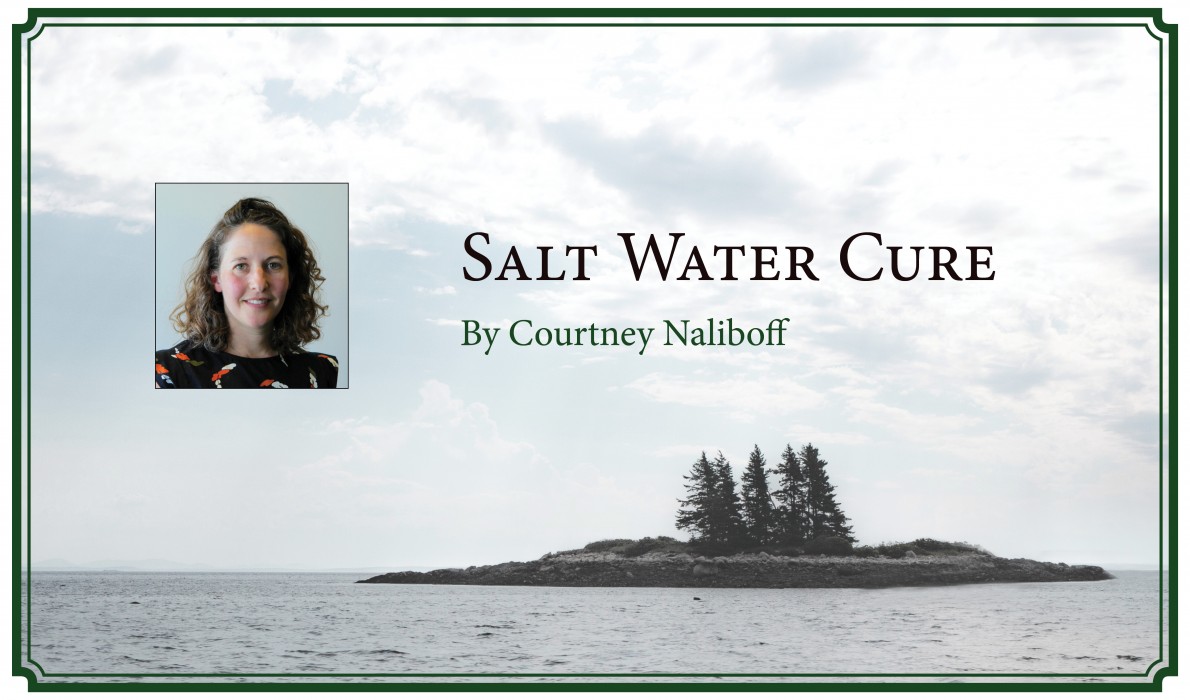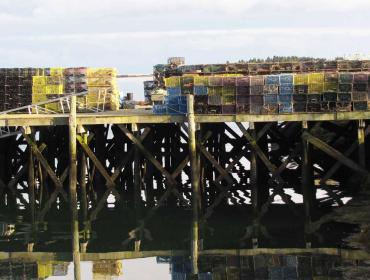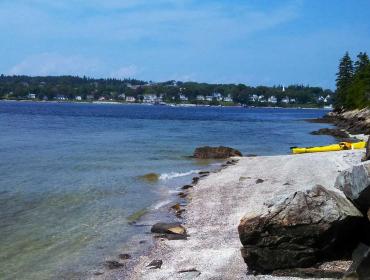Posted November 19, 2018
Last modified November 19, 2018
By Courtney Naliboff
It could have been a ghoulish scene: hole saws cut into vertebrae, hammers whacking chisels, loosening chunks of marrow. Small children swept bone and sawdust from the floor.
Rather than a scene from a horror movie, this was a community work day on North Haven’s minke whale skeleton. The whale, which washed up on Crabtree Point in August 2016, was buried in the town gravel pit for a year and excavated last spring, continues to progress from a disconnected pile of bones to a museum-worthy articulated skeleton.
The bones spent some time at Turner Farm, which has a sheltered area large enough to house them all, but were recently moved back to the school. This was the first opportunity since April for community members, many of whom assisted with the excavation, to get their hands back on the bones.
The task for the day was to begin drilling the vertebrae so they could be threaded on a metal pipe for display. To assist in the process, Dan DenDanto, a College of the Atlantic/Allied Whale expert in this exact thing, was visiting. He’d given a talk the day before, which I’d unfortunately missed due to some post-flu shot sadness on the part of my daughter, but he was a bright presence in the school projects building.
There were four high school students present, two preschool students, Penrose included, four elementary schoolers, and a handful of community members. Represented were parents, board members, and a few adults who were present for the excavation, but not otherwise connected to the school.
There were three tasks at hand: cleaning the bones one more time, drilling the outline of a hole in the center of each vertebra, and chiseling out the marrow from the hole. The younger kids were relegated to cleaning, with some adult or high school student support.
Penrose and her friends used sticks and brushes to scrape the last of the dirt from the intricate recess of the wing-like vertebrae, working methodically on the floor, outside, or over a trash can. Pen was there at the excavation, and she treated the bones like old friends.
Dan and Terry Goodhue, North Haven’s original cetacean bone experts, demonstrated safe use of the hole saws, and some of the high school students took the lead with drilling, while others photo-documented and ran screenings of a short film Terry’s students made back in 2004 as they assembled a white-beaked dolphin skeleton. We all took turns chiseling away at the drilled marrow, waiting for the satisfying crack and prying out pieces. Pen and her friends came away with some for souvenirs.
Meanwhile, we learned a lot, without any effort. Dan spoke about the varying densities of bone, even within a single bone. We learned about cancellous (spongy) and cortical (compact) bone, and the rigor of choosing the correct materials for skeletal display. There were anatomy and physiology connections, engineering know-how, and power tool skills being shared.
One vertebra, from the lumbar region of the whale’s spine, was oozing orange oil. Here we connected to literature: the high school students are all reading Nathaniel Philbrick’s masterpiece, In the Heart of the Sea: The Tragedy of the Whaleship Essex, and this was a real-life illustration of just how oily a whale is.
Here on North Haven, we pride ourselves on the authentic, hands-on learning opportunities we offer, and I think the minke whale represents one of the best. The community work session brought together the school and community, and offered deep learning across subject areas. I can’t wait to see what the next step is, and what else the whale can teach us.
Courtney Naliboff lives, writes, and teaches school on North Haven.
Contributed by



